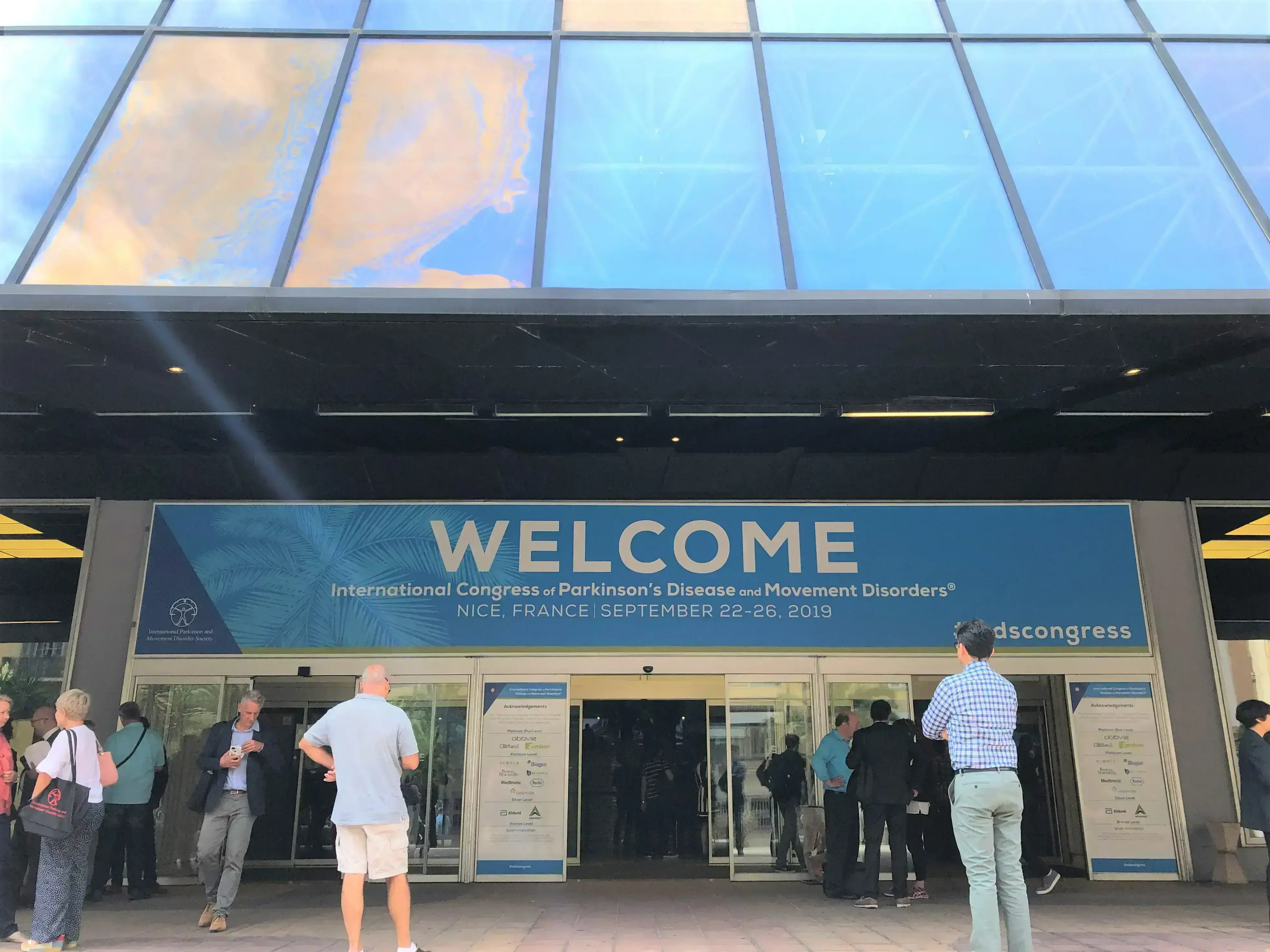In a satellite symposium held at the 2019 MDS Congress, Professor Hubert Fernandez of the Lerner College of Medicine, Cleveland, USA said that our knowledge of the symptom spectrum of Parkinson’s disease (PD) has expanded since the recognition of ON and OFF states posed by C. David Marsden in 1976. We now recognize that PD is not simply black and white, but there are more than 50 shades of grey intermediary states with multiple possibilities for motor and non-motor symptom fluctuations, he explained.1,2
2019년 MDS 회의 기간 중 열린 한 토론회에서 미국 클리블랜드주 러너의과대학의 후버트 페르난데즈(Hubert Fernandez) 교수는 1976년 C. 데이비드 마스든(C. David Marsden)이 온-오프 상태라는 개념을 제시하면서 파킨슨병(PD)의 증상 스펙트럼에 관한 지식이 확장되었다고 말했습니다. 덕분에 파킨슨병이 단순히 흑과 백으로 구분되는 것이 아니며, 다수의 운동 및 비운동 증상의 동요(fluctuation) 가능성이 있는 50가지 이상의 중간 영역이 존재한다는 사실이 알려지게 되었다고 페르난데즈 교수는 설명했습니다.1,2
More than 50% of patients develop fluctuations in response to levodopa after 5 to 10 years of treatment,3,4 which they find to be most bothersome, impacting highly on quality of life.5,6
파킨슨병 환자 중 절반 이상은 5~10년간 치료를 받으면 레보도파에 대한 반응으로 동요 증상이 발생하며,3,4 이러한 변화는 가장 골치 아픈 경험으로서 삶의 질에 상당한 영향을 미칩니다.5,6
Parkinson’s disease is not simply black and white; there are more than 50 shades of grey intermediary states with multiple possibilities for motor and non-motor symptom fluctuations
파킨슨병은 단순히 흑과 백으로 구분되는 것이 아니며, 수많은 운동 및 비운동 증상의 동요 가능성이 있는 50가지 이상의 중간 영역이 존재합니다
OFF symptoms continue to be under-recognized1 due to a combination of factors including the lack of a consensus definition and the emphasis on definitions based on motor symptoms only, missing out the “transition states”.
정의에 대한 합의의 미흡함, 운동 증상만을 기반으로 한 개념 강조로 인해 OFF symptoms이 과소평가되어 왔으며, '과도기 상태'가 누락되어 왔습니다.
A new definition of OFF time
OFF time에 관한 새로운 정의
A new definition of OFF time has been proposed as: a temporary change in clinical state in a PD patient that is perceived as negative compared to the beneficial effects of PD therapy, it is characterized by motor and/or non-motor symptoms – the combination and severity of which are unique to each patient – and incorporates all previous terms used to describe various OFF states as part of the OFF spectrum. This practical definition of OFF may help to improve clinical recognition of OFF symptoms and lead to significant benefit for patients.7
OFF time에 대한 새로운 정의는 다음과 같이 제안됩니다: 치료의 이점에 비해 부정적으로 인식되는 파킨슨병 환자 임상 상태의 일시적 변화로, 이는 운동 및 또는 비운동 증상으로 특징지어집니다 (각 환자마다 조합과 중증도가 고유함). 그리고 OFF time은 OFF spectrum의 일부분으로서 지금까지 다양한 OFF state를 설명하기 위해 사용했던 모든 정의들을 포함합니다. OFF에 대한 이와 같은 실질적 정의는 OFF symptoms에 대한 임상적 인식을 개선하고, 그 결과 환자들에게 현저한 이점이 될 것입니다.7
A new practical definition of OFF time may help to improve clinical recognition of OFF symptoms and lead to significant benefit for patients
오프 시기에 대한 새로운 실질적 정의는 오프 증상의 임상적 인식을 개선하고 환자에게 더 많은 이점을 제공할 것입니다
Non-motor symptoms at the core of symptomatology in PD
파킨슨병 증상군 중 핵심인 비운동 증상
It is now recognized that non-motor symptoms are at the heart of PD,8,9 said Professor Per Odin, Lund University, Sweden in his talk focusing on the time course of non-motor complications. Non-motor symptoms can occur early in the disease course and may even precede motor symptoms.8,10
스웨덴 룬드대학교의 퍼 오딘(Per Odin) 교수는 시간 경과에 따른 비운동 합병증의 변화에 대한 발표에서 현재는 비운동 증상이 파킨슨병의 핵심으로 인식되고 있다고 말했습니다.8,9 비운동 증상은 파킨슨병의 진행 과정 중 초기에 발현될 수 있으며, 심지어 운동 증상보다 먼저 나타날 수 있습니다.8,10
Non-motor symptoms are mostly progressive,11 and are an important determinant of quality of life, with depression and sleep having the greatest impact.12 The patterns of non-motor symptom fluctuations in PD are heterogeneous and complex,13 and a new rating scale -- the MDS-NMS -- now captures fluctuations in non-motor symptoms.14
비운동 증상들은 대부분 진행성이고11 삶의 질을 결정하는 중요한 요소들인데, 특히 우울증과 수면이 미치는 영향이 가장 큽니다.12 파킨슨병의 비운동 증상의 동요는 이질적(heterogeneous)이고 복합적입니다.13 최근 새롭게 수립된 평가 척도인 MDS-NMS를 이용하면 비운동 증상의 동요를 파악할 수 있습니다.14
Non-motor symptom fluctuations in PD are heterogeneous and complex, and may be captured by a new rating scale -- the MDS-NMS
파킨슨병의 비운동 증상 동요는 이질적이고 복합적이며, 새로운 평가 척도인 MDS-NMS를 이용하여 비운동 증상의 동요를 파악할 수 있을 것입니다
Current treatment of non-motor symptoms is limited, and the development of new treatments is a research priority.15
현재 비운동 증상의 치료는 제한적이며, 새로운 치료법의 개발이 연구 분야의 최우선 과제입니다.15
Motor symptoms can occur in early PD
파킨슨병 초기에 발현될 수 있는 운동 증상
Motor fluctuations and dyskinesia can be detected even at the early stages of PD,17 said Professor Joaquim Ferreira, University of Lisbon, Portugal, and “wearing-off” phenomena is not limited to levodopa treatment but can occur naturally as a consequence of disease duration.18 While there are no markers of late disease progression,19 we know that patients with late stage PD still respond to levodopa therapy.20
포르투갈 리스본대학교의 조아킹 페헤이라(Joaquim Ferreira) 교수는 운동 동요(motor fluctuations)와 이상운동증(dyskinesia)이 파킨슨병 초기에도 발견될 수 있다고 말했습니다.17 약물 치료의 효과가 감소하는 현상은 레보도파를 이용한 치료에 국한되어 나타나는 것이 아니라, 파킨슨병 지속의 결과로 자연스럽게 발생할 수 있는 현상입니다.18 파킨슨병 후기 진행에 대한 마커는 존재하지 않지만,19 후기 파킨슨병 환자가 레보도파 치료법에 계속해서 반응을 보인다는 사실은 잘 알려져 있습니다.20
Motor fluctuations and dyskinesia can be detected even at the early stages of PD
운동 동요와 및 이상운동증은 파킨슨병 초기에도 나타날 수 있습니다
In summary, Professor Ferreira quoted the recent novel finding that non-motor features of PD, particularly low mood and anxiety, are significant risk factors for motor complications.21 Thus, both non-motor and motor symptoms of PD are inexplicably linked, and the best predictor of motor complications may be neurodegeneration severity.
페헤이라 교수가 발표를 마무리하며 인용한 최근의 연구 결과에 따르면, 파킨슨병의 비운동 증상, 특히 기분 저하와 불안 증상은 운동 합병증에 대한 주요 위험 요인입니다.21 따라서, 파킨슨병의 비운동 및 운동 증상은 설명할 수는 없지만 서로 연결되어 있고, 운동 합병증에 대한 가장 좋은 예측인자는 신경퇴행의 중증도일 수 있습니다.
This article highlights information presented during a satellite symposium at the 2019 MDS Congress, “Beyond motor wearing-off: What are we missing?” sponsored by BIAL.
본 기사는 BIAL의 후원으로 개최된 2019년 MDS 회의 '운동적 약물 효과 저하: 무엇을 간과하고 있는가?(Beyond motor wearing-off: What are we missing)' 기간 중 열린 하위 토론회에서 발표된 정보를 다룹니다.
본 기사는 토론회에서 발표된 과학 지식 내용을 공정하게 전달하였습니다. 본 기사에서 제시된 의견은 룬드벡의 의견과 다를 수 있습니다.




